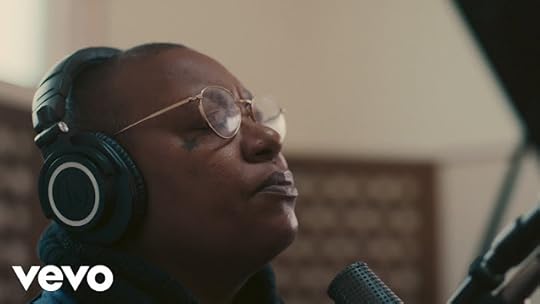Mark Anthony Neal's Blog, page 3
November 16, 2024
Roy Haynes, Harlem Speaks - National Jazz Museum in Harlem (2005)
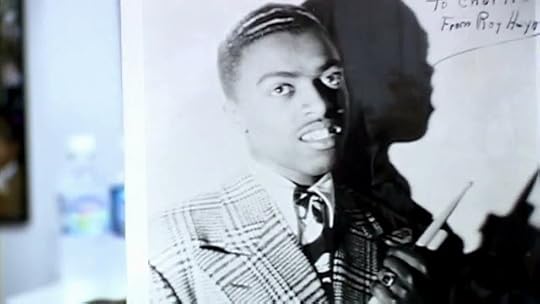
"Harlem Speaks presented drum master Roy Haynes (1925-2024) in a discussion with fellow drummer Lewis Nash that captivated and thrilled the rapt audience at the offices of the Jazz Museum in Harlem. Much as when on drums, Haynes was at the center of a swirling discussion that swung from his early days growing up in Boston, to coming to New York 60 years ago to play with the Luis Russell at the Savoy Ballroom onto remembrances of the exhilaration of performing with a cross-section of the eternal pantheon of jazz...Louis Armstrong, Lester Young, Charlie Parker, Sarah Vaughn, Thelonious Monk, Ella Fitzgerald, Billie Holiday, Chick Corea, and John Coltrane, to name a few."
January 6, 2024
From Asa to A. Phillip: Nothing But a ‘Sigma’ Man by Mark Anthony Neal
 Richard Avedon, A. Philip Randolph, Founder, Brotherhood of Sleeping Car Porters, New York City, April 8, 1976
Richard Avedon, A. Philip Randolph, Founder, Brotherhood of Sleeping Car Porters, New York City, April 8, 1976From Asa to A. Phillip: NothingBut a ‘Sigma’ Man by Mark Anthony Neal
NewBlackMan (in Exile) | @NewBlackMan
One of the most important images of theBlack masculinity in the 20th century came courtesy of Michael Roemer’sfilm Nothing But a Man. Set in Alabama, but filmed on location,primarily in Atlantic City, NJ throughout 1963 – it was completed a month afterthe March on Washington for Jobs and Freedom – Nothing But a Man, withits focus on Black masculinity and fatherhood, in relationship to work andorganized labor, serves, in part, as a tribute to Asa Phillip Randolph,co-founder of The Messenger, who is most well known as the organizer ofBrotherhood of Sleeping Car Porters.
During the Freedom Rides and CivilRights Marches of the early 1960s, in which media coverage often depicted Blackmen as loose cannons with little respect for the law, however unjust, Nothingbut a Man offered a rarely seen, and perhaps unprecedented, portrait ofBlack men. As such the director Michael Roemer used NAACP field workersto help do research for the film, adding a level of authenticity to thenarrative. At the center of the film was Duff Anderson, portrayed withbrooding nuance by Ivan Dixon, whose gestures – facial and physical – conveyedthe complexity of Black manhood that had been usually presented in televisionand film as cartoonish and threatening. Duff was neither Stepin Fetchit, thebumbling and shuffling character that actor Lincoln Perry made a crossover starin the 1930s or Malcolm X, an icon of Black militancy for generations. Duff Anderson was, as the film title suggests, just a man.
Working with an all-Black unionizedsection gang, so called “gandy dancers”, who helped maintain railroad tracksthroughout the South, Duff meets and falls in love with the “preacher’sdaughter” Josie, who was portrayed by noted Jazz vocalist Abbey Lincoln. YetDuff carries many of the demons that burdened Black men throughout the early20th century: he left a four-year-old son in Birmingham with a woman that hedidn’t marry, he was estranged from his own father, and though working therailroad afforded him some freedom and money in comparison with mostworking-class Black men, the work isolated him from community and family.
At every turn as Duff considers marryingJosie, raising his estranged son, and starting a family with Josie, it is thequestion of a work life balance – far different from most whites – in whichlife is not just a metaphor for the quality of living, but for life itself. Duff, for example, after marrying Josie and having to leave hisunionized railroad job, takes a job at a local sawmill. When Duff tries tosubtly organize the Black men at the mill to “stand up for themselves” he issummarily fired, and subsequently blacklisted from jobs at other mills. “Now, if you want to work like a real nigger” a local bartender tells Duff,“You can always go out and chop cotton.” Faced with only job opportunities thathe saw as both demanding and backward (“They done that too long in my family”),Duff chose flight.
Duff Anderson is an echo of the men thatA Phillip Randolph first organized as elevator operators, and later as sleepingcar porters, where trade unions offered Black men some modicum of financialsecurity, a level of social respect among Negros, and a finer sense of theirmasculinity, in an era when manhood was largely tethered to your ability tohave stable employment. Yet in the bartender’s suggestion, one can hearEugene Debs’ “Appeal to Negro Workers” (1923) cautioning Black workers to notbe “willing to be menials and servants and slaves of the white people.” It was an appeal that Randolph took seriously in the formation of theBrotherhood of Sleeping Car Porters — the use of “Brotherhood”, perhaps a nodto the African Blood Brotherhood of Cyril Briggs, which was also influential onthe ideas of the young A. Phillip Randolph after he moved to Harlem in1911. Indeed, “Brotherhood, Scholarship, Service!” – the mantra of theBrothers of Phi Beta Sigma – would remain a guiding principle of A Phillip Randolph.
Randolph’s migration from Jacksonville,Fl to the emerging Black Mecca of Harlem would be the stimulus for whathistorian Cornelius L. Bynum describes as a process of “reinvention” forRandolph, notably in his transition from being simply known as “Asa” tobecoming “A. Phillip”, which carried an aura of the cosmopolitanism that wouldbe in the spirit of the New Negro Movement. Randolph’s Harlem“homecoming” was not unlike that of many other Negroes, who were beingreinvented to all that paid attention as “New Negroes.” That so many came“Home to Harlem” or Chicago under the guise of opportunity served as a usablemetaphor for a reimagining of Blackness, manhood and politics.
These were processes of transformationthat were befitting the so-called Jazz age, where in the spirit of modernistcreativity, social and artistic improvisation and the collaborative ethos ofthe Big Bands of James Reese Europe, Fletcher Henderson, and Duke Ellington,many would claim as their entry point into a world made anew. Among themwould be Randolph, who finds his initial footing with “Ye Friends ofShakespeare” – The Harlem Shakespeare Society – where his sense ofperformatively, which would later have an outlet in his oratory, would alignwith his sense of an emerging radicalism, social consciences, and talent fororganizing. In Shakespearean drama, Randolph found one of his definingmantras: “above all to thine own self be true then thou canst be false to noman.”
“Culture for Service, Service forHumanity” – the Brothers of Phi Beta Sigma are often reminded, and it was aphrase that Randolph began to embody, even in the earliest years of theFraternity. Randolph finds his political voice in The Messenger,the journal that he launched with fellow socialist traveler Chandler Owens. Thepages of The Messenger were a site of spirited debate with otherjournals like Cyril Brigg’s Crusader, Hubert Harrison’s Negro Voiceand most notably Marcus Garvey’s Negro World. That such debates oftenspilled out to street corners, where activist stood on boxes, speaks to thepalpable spirit of discourse that was in that moment, an analog or pre-digitalexample of what #BlackTwitter once was. That Randolph and Owens utilizedcommunity book clubs and study groups, as part of a broader effort that JarvisR. Givens details in his important book Fugitive Pedagogy: Carter G. Woodsonand the Art of Black Teaching, highlights their commitment to “BlackStudy”.
The New Negro marked a period in whichBlack men came to public voice, though Randolph and the pages of TheMessenger offer a more complex view of gender in that moment. Indeed,one of The Messenger’s major patrons was Lucille Campbell GreenRandolph, a local Harlem businesswoman and wife of A. Phillip Randolph. “The New Negro Woman, with her head erect and spirit undaunted…everconscious of her historic and noble mission of doing her bit toward theliberation of her people in particular and the human race in general” is how TheMessenger described Black women in a 1923 issue devoted to “The New NegroWoman.” Though Lucille Campbell Green Randolph was not a member of Zeta PhiBeta, Inc., her marriage, and partnership with her husband mirror therelationship between the sorority and Phi Beta Sigma, which areconstitutionally bound. Indeed, when one glances at the rather dourdemeanor of Randolph in the many photos taken of him during the March onWashington for Jobs and Freedom, one sees the impression on an elder who isbeing pushed to the margins of a movement that he helped create, as much as aman, who lost his life partner, only months earlier in April of 1963.
It was on the pages of The Messengerthat Randolph called into question the idea of the “Slacker Porter” contrastinghim to the “manly man”. As Robert Hawkins writes “Through this binaryopposition, Randolph constructed an ideal of black working-class manhoodfounded on dignified work, race pride, and labor solidarity.” Like manyof his peers, Randolph was not immune to the so-called “respectability”politics of the era, as he sought to rehabilitate the idea of the Black workerthrough trade-unionism. And indeed, these were some of the most pronouncedthemes of Nothing but a Man, which also linked those attributes to anidealized Black fatherhood. Nothing But a Man was also notable forits soundtrack, which featured music exclusively from the Motown Recordingcompany, which was then an up-and-coming Black-owned corporation that had onlybeen incorporated, three years before the film was shot. It was both prescienton Roemer’s part and savvy of label owner Berry Gordy to include ‘TheSound of Young America” as part of the film’s soundscape. Indeed, Gordy’sbet on a Black popular music that would crossover to White mainstream audiencewould dramatically shift the prospects for many Black musicians well into thefuture.
None of this would have been conceivableto Randolph, who in erecting a language of manhood for Black working-classunion members, pitted those workers against “the tip-taking, working-classmusician.” Ironically, given Randolph’s own proximity to Black performance andthe Black creative classes, his stance seems surprising. But whatRandolph was juxtaposing was the image of hard-working Black men to that of theitinerant Bluesman, sitting at a train station, performing for his meals. As Miriam Thaggert argues in her book RidingJane Crow: African American Women on the American Railroad, the trainplatform was a site inwhich the right for Black people to sell their wares, whether fried chickensandwiches or a blues tune, were contested. When Randolph, to useHawkins’ words, asked porters to decide whether they were proudly laboringunion men or musical mendicants performing on the street for whatever thePullman Company and the traveling public might throw their way,” he wascontributing to this discourse.
Nearly a century after Randolph offeredthose words, and in a historical moment when labor unions continue to be underassault – especially those who are visibly Black – one wonders how Randolphwould view the situation of run-of-the-mill Black musician or rapper – orHollywood writer, who sell their wares to transnational corporations but areoffered little beyond the status of a contract laborer.
***
MarkAnthony Neal is the James B. Duke Distinguished Professor of African &African American Studies at Duke University, and member of the Delta Zeta Sigma(Durham) Alumni Chapter of Phi Beta Sigma, Incorporated.
@font-face {font-family:"Cambria Math"; panose-1:2 4 5 3 5 4 6 3 2 4; mso-font-charset:0; mso-generic-font-family:roman; mso-font-pitch:variable; mso-font-signature:-536870145 1107305727 0 0 415 0;}@font-face {font-family:Calibri; panose-1:2 15 5 2 2 2 4 3 2 4; mso-font-charset:0; mso-generic-font-family:swiss; mso-font-pitch:variable; mso-font-signature:-536859905 -1073697537 9 0 511 0;}@font-face {font-family:Roboto; panose-1:2 0 0 0 0 0 0 0 0 0; mso-font-charset:0; mso-generic-font-family:auto; mso-font-pitch:variable; mso-font-signature:-536868097 1342185855 33 0 415 0;}p.MsoNormal, li.MsoNormal, div.MsoNormal {mso-style-unhide:no; mso-style-qformat:yes; mso-style-parent:""; margin:0in; mso-pagination:widow-orphan; font-size:12.0pt; font-family:"Calibri",sans-serif; mso-ascii-font-family:Calibri; mso-ascii-theme-font:minor-latin; mso-fareast-font-family:Calibri; mso-fareast-theme-font:minor-latin; mso-hansi-font-family:Calibri; mso-hansi-theme-font:minor-latin; mso-bidi-font-family:"Times New Roman"; mso-bidi-theme-font:minor-bidi; mso-font-kerning:1.0pt; mso-ligatures:standardcontextual;}p {mso-style-noshow:yes; mso-style-priority:99; mso-margin-top-alt:auto; margin-right:0in; mso-margin-bottom-alt:auto; margin-left:0in; mso-pagination:widow-orphan; font-size:12.0pt; font-family:"Times New Roman",serif; mso-fareast-font-family:"Times New Roman";}.MsoChpDefault {mso-style-type:export-only; mso-default-props:yes; font-family:"Calibri",sans-serif; mso-ascii-font-family:Calibri; mso-ascii-theme-font:minor-latin; mso-fareast-font-family:Calibri; mso-fareast-theme-font:minor-latin; mso-hansi-font-family:Calibri; mso-hansi-theme-font:minor-latin; mso-bidi-font-family:"Times New Roman"; mso-bidi-theme-font:minor-bidi;}div.WordSection1 {page:WordSection1;}October 30, 2023
Meshell Ndegeocello - The Atlantiques (Official Video)
Tiny Desk Concert | Nile Rodgers & CHIC
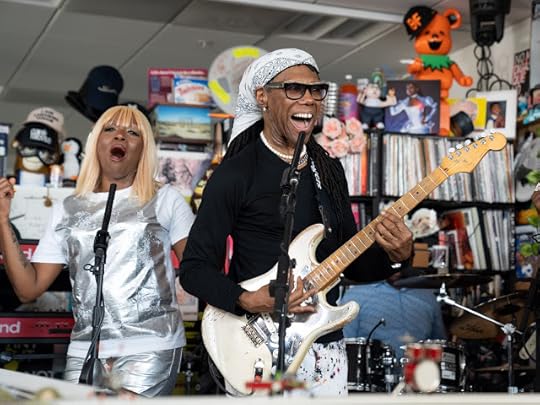
"Nile Rodgers' wondrous set spans his massive catalog — songs he wrote for CHIC, songs he wrote with collaborators, songs he wrote for other stars and a surprise song he wrote for a classic movie. Throughout, Rodgers is the pulse for an ever-amplifying funk. The band's performance of "I'm Coming Out" builds to a rip-roaring sax solo. A rollicking performance of "We Are Family" breaks down in the middle before erupting to a triumphant finish. And atop the rippling bassline of "Good Times," Rodgers breaks into an impromptu version of "Rapper's Delight," which samples the song. It all leads to the maximum funkocity of Bowie's "Let's Dance," a tribute to the genre's reach and power."
October 27, 2023
Mark Anthony Neal: Film icon Richard Roundtree Incarnated 'Black Superhero Image of a Malcolm X' with Style & 'Swagger'
 Mark Anthony Neal, Author and James B. Duke Distinguished Professor of African & African American Studies at Duke University joined FRANCE 24's Mark Owen to discuss the enduring legacy of the late actor Richard Roundtree. The actor, who came to international prominence as the star of the film SHAFT (1971), had a career that lasted more than 50 years in film, television and advertising.
Mark Anthony Neal, Author and James B. Duke Distinguished Professor of African & African American Studies at Duke University joined FRANCE 24's Mark Owen to discuss the enduring legacy of the late actor Richard Roundtree. The actor, who came to international prominence as the star of the film SHAFT (1971), had a career that lasted more than 50 years in film, television and advertising.
Mark Anthony Neal: Film icon Richard Roundtree Incarnated 'Black Superhero Image of a Malcom X' with Style & 'Swagger'
 Mark Anthony Neal, Author and James B. Duke Distinguished Professor of African & African American Studies at Duke University joined FRANCE 24's Mark Owen to discuss the enduring legacy of the late actor Richard Roundtree. The actor, who came to international prominence as the star of the film SHAFT (1971), had a career that lasted more than 50 years in film, television and advertising.
Mark Anthony Neal, Author and James B. Duke Distinguished Professor of African & African American Studies at Duke University joined FRANCE 24's Mark Owen to discuss the enduring legacy of the late actor Richard Roundtree. The actor, who came to international prominence as the star of the film SHAFT (1971), had a career that lasted more than 50 years in film, television and advertising.
October 20, 2023
Still Paying the Price: Reparations in Real Terms | EP 3: A Death Ruled “Justifiable”: The Killing of John Wesley Wilder
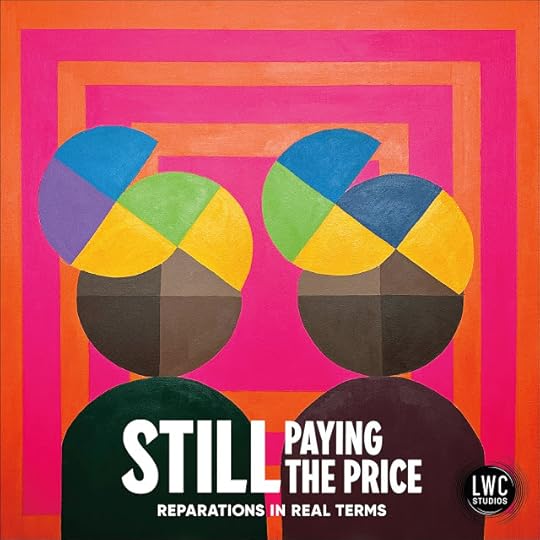
'In July 1965, police officer Edward Nugent encountered John Wesley Wilder, a Black man, outside a cafe in Ruston, Louisiana. Nugent shot Wilder five times, resulting in his death. Local authorities deemed it a justifiable homicide, and subsequent investigations in 1965 did not bring justice or closure to Wilder's family. In 2008, legislation introduced by Congressman John Lewis, gave hope to families seeking justice for racially motivated homicides prior to 1970. Nugent, the shooter, is still alive, and new evidence has emerged. Reporter Ben Greenberg investigates whether justice still possible for John Wesley Wilder and his family.'
Helga | Writer Macarena Gómez-Barris on Finding Beauty in Ambiguity

"This [term] 'femme' becomes more possible to me as a figure for not just embodiment, but for thought, action, engagement, connection."
'Macarena Goméz-Barris is Professor and Chair of Modern Culture and Media at Brown University, founder of the Global South Center at Pratt Institute, an organization which supports artists, activists, and scholars in their efforts to decolonialize local and global communities. In this episode of Helga, Goméz-Barris talks about how one can and must find beauty in the most ambiguous of places, how she uses the word “femme” to escape the embattled histories of the word “female," and how she has—and hasn’t—moved on from a traumatic early swimming lesson with her father.'
October 19, 2023
Left of Black S13 · E21 | Sheryll Cashin on the Systematic Taking of Resources from Marginalized Communities
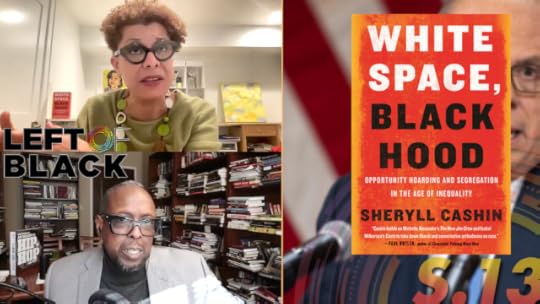
How do city and state governments go about creating “ghettos” to sequester their undesirable communities while protecting affluent White spaces? And at whose expense? Sheryll Cashin, J.D., the Carmack Waterhouse Professor of Law, Civil Rights and Social Justice at Georgetown University Law Center, joins Left of Black host Dr. Mark Anthony Neal to discuss her book White Space, Black Hood: Opportunity Hoarding and Segregation in the Age of Inequality published by Beacon Press.
Amplify With Lara Downes: How Corinne Bailey Rae and Theaster Gates are Preserving Black Culture
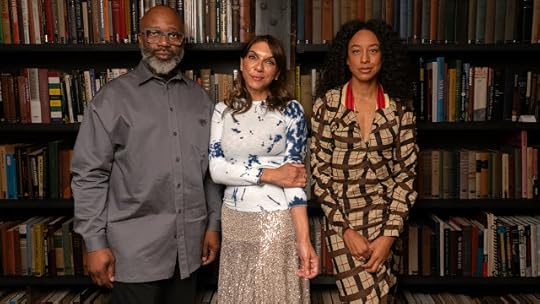
'On her album, Black Rainbows, Corinne Bailey Rae was inspired by the art, books and magazines at the Stony Island Arts Bank, a repository for Black history on Chicago's South Side, created by Theaster Gates.'
Mark Anthony Neal's Blog
- Mark Anthony Neal's profile
- 30 followers


